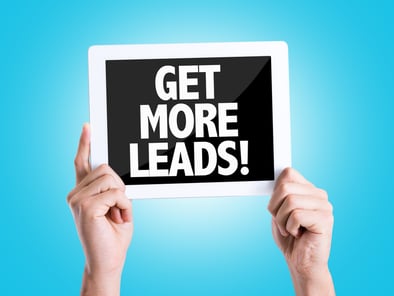 With the ever-increasing volume of generic marketing content thanks to AI tools, it’s critical that companies make greater efforts to stand out. That’s why sales enablement content is more important than ever.
With the ever-increasing volume of generic marketing content thanks to AI tools, it’s critical that companies make greater efforts to stand out. That’s why sales enablement content is more important than ever.
By aligning content with the buyers’ journeys and providing the information they seek at every touchpoint, marketers elevate their brand's credibility, instill trust, and drive conversions.
Bridging the Gap Between Marketing and Sales
Sales enablement content facilitates alignment between sales and marketing, ensuring the marketing team provides the sales force with the requisite tools, resources, and knowledge to engage potential clients and close sales.
Furthermore, account-based marketing is one of today’s key tools toward customer engagement, recruitment, and closing the sale. Therefore, customized, personalized materials are key. They need to speak directly to the unique needs, aspirations, and challenges of each prospect. To maximize the sales value of these types of content, they should be crafted based on role, making it easier to broaden the reach of each piece.
Materials need to focus on a variety of topics:
- Combining client pain points with a focus on “What’s in it for me” as they relate to your solution set.
- Proprietary data that can be used to provide industry-wide benchmarking – and news – to strengthen corporate credibility.
- In-depth analyses educate potential clients about the variety of available solutions – and why yours is best
Of course, each piece of content needs to address specific pain points, questions, and concerns at precisely the right juncture of the buyers’ journey.
The Sales-enablement Corporate Toolkit
As with all marketing content, sales-enablement materials come in all “shapes and sizes.” Here’s a quick overview:
Infographics – These are great at communicating your corporate benchmarks. Each aspect of your solution can be highlighted.
Webinars – Not only can you strengthen your brand and thought leadership, but you can generate new leads and strengthen existing relationships. Pairing with other industry experts to deliver new, educational information makes your webinars the ones to attend.
Interactive demos – These can be independently run by the individuals visiting your site, or you can provide real-time guided demos, allowing them to ask questions along the way, strengthening your sales and technical teams’ relationships with these potential clients.
Case studies – The bread-and-butter of sales-enablement content. Of course, it’s even better when the client not only allows you to use the company name but also records a video testimonial.
Whitepapers – Yours isn’t the only solution that can solve their challenges. Whitepapers allow you to go into detail about why yours is the best.
Distributing Your Expertise
By aligning distribution channels with the preferences of your buyer personas, you amplify the reach and resonance of your content. Multichannel distribution is always the right way to go. Each item can be promoted on social media, made downloadable from your website, and distributed via your monthly newsletter. Personalized materials need to be integrated into inbound marketing and the ABM experience, so potential clients receive the materials when they are most relevant to the buyers’ journeys.
Furthermore, you can maximize the value of your materials by creating excerpts that can be provided to industry-focused media outlets as contributed thought leadership content. Your benchmarking reports can become an industry news staple when you generate a specific cycle of updates – e.g., a quarterly report on the state of cybersecurity for SMBs.
With sales-enablement content, you can go beyond the marketing blah blah and create true value for your potential clients, making it more likely they will become actual clients.


